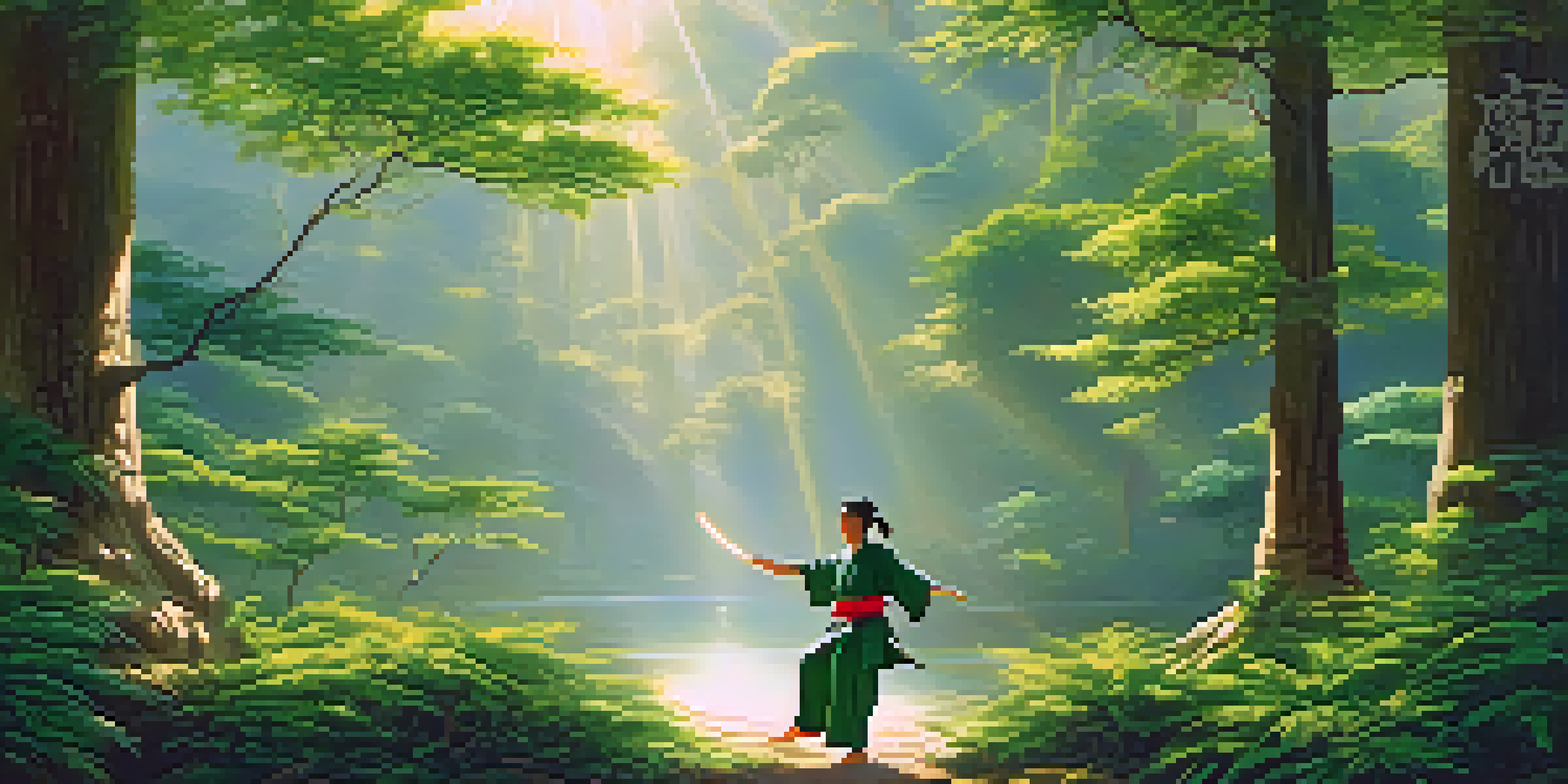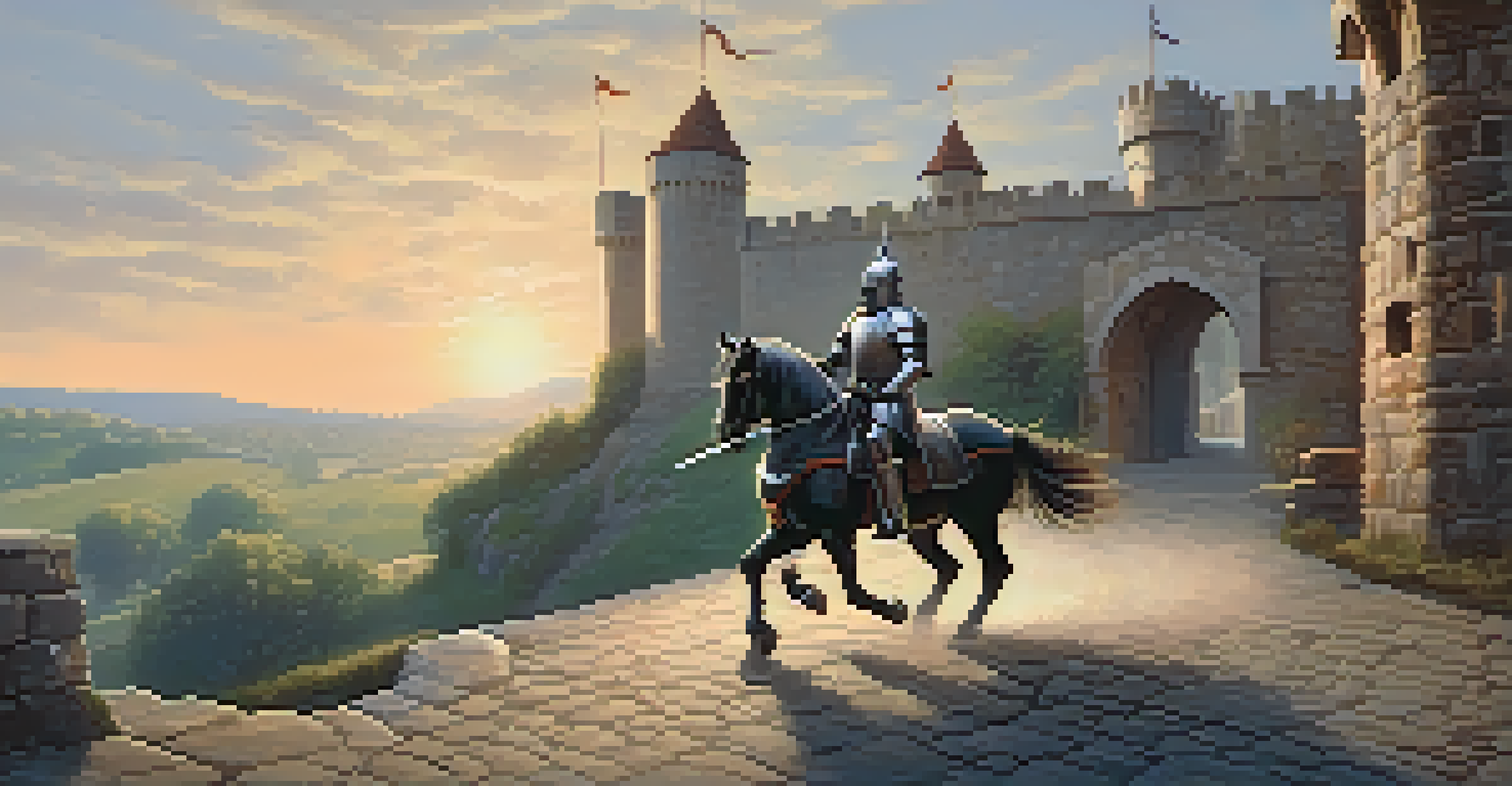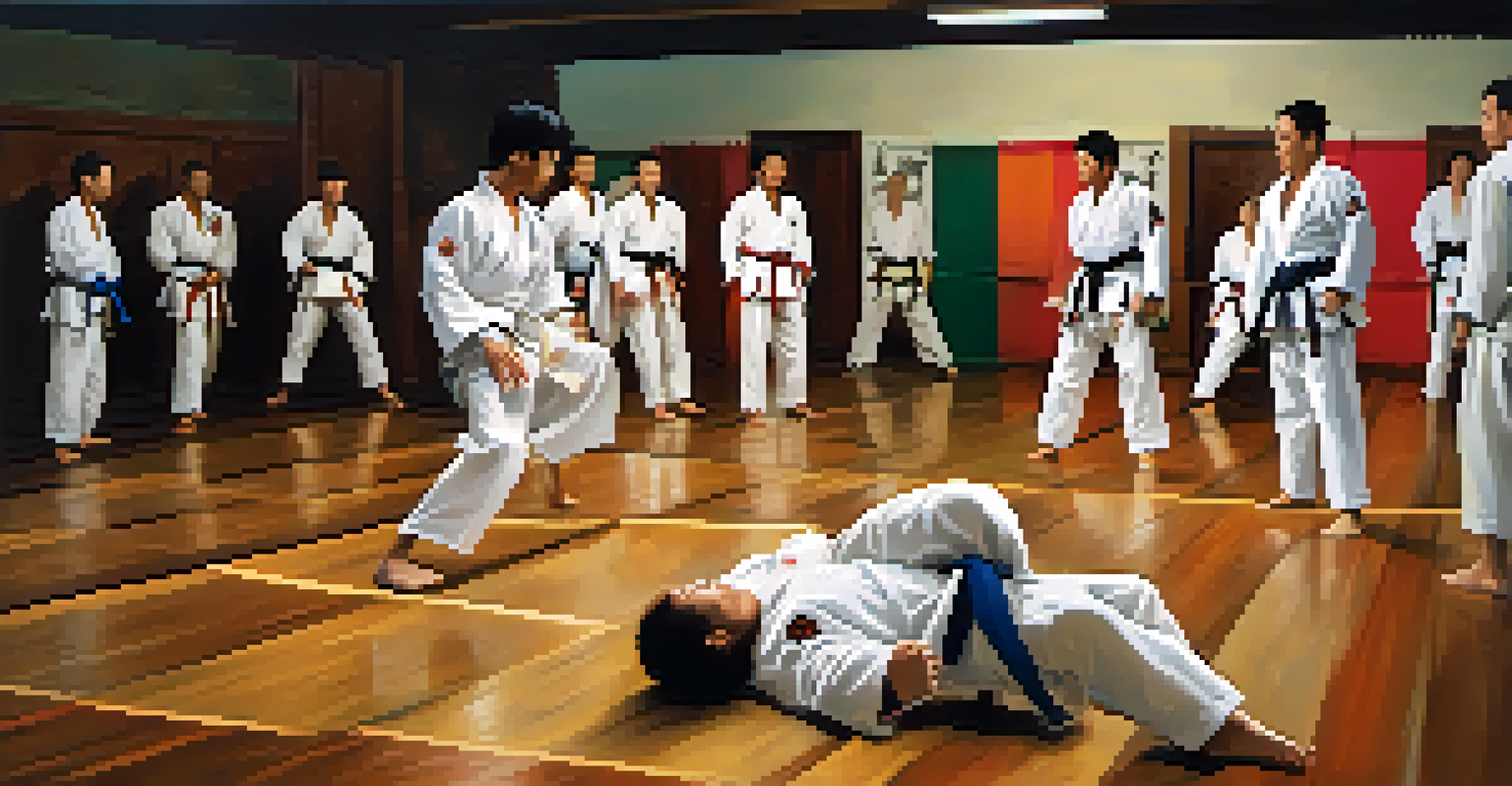The Influence of War on Martial Arts Development

Introduction: The Unbreakable Link Between War and Martial Arts
Throughout history, war and martial arts have been intertwined, each influencing the other in profound ways. As societies faced conflicts, they adapted their fighting techniques to better suit their needs, leading to the evolution of various martial arts. This relationship highlights how martial arts are not just about personal development but also serve as a response to the demands of war.
Martial arts are ultimately about self-defense, but they are also about self-discovery and personal growth.
The necessity for effective combat skills during warfare often spurred innovation in martial techniques and strategies. For instance, ancient civilizations developed specific styles tailored for battlefield scenarios, such as the phalanx formations of Greek hoplites. These adaptations show how martial arts are shaped by the realities of combat, making them a reflection of the times.
In this article, we will explore key historical periods where war significantly influenced the development of martial arts, illustrating how these practices evolved in response to conflict and societal needs.
Ancient Civilizations: Martial Arts as Tools of War
In ancient civilizations, martial arts often emerged as essential tools of war. For example, the Chinese martial arts known as Kung Fu were developed not only for self-defense but also to prepare soldiers for battle. Techniques were refined based on the requirements of warfare, ensuring that practitioners could fight effectively in various scenarios.

Similarly, in ancient Greece, the art of Pankration combined elements of boxing and wrestling, providing soldiers with a practical fighting style that could be used in close combat. This adaptability made it not only a sport but also a crucial skill for warriors. The emphasis on effectiveness in martial arts during these times underscores their direct connection to the realities of conflict.
War Shapes Martial Arts Evolution
Throughout history, martial arts have evolved in response to the realities and demands of warfare.
Thus, martial arts from these ancient cultures showcase how the pressures of war necessitated the evolution of fighting styles, creating practices that have endured through the ages.
The Middle Ages: Chivalry and the Rise of European Martial Arts
During the Middle Ages, the concept of chivalry shaped martial arts in Europe, particularly with the emergence of knightly combat styles. Schools of combat, such as those documented by Johannes Liechtenauer, focused on swordsmanship and grappling techniques, designed to prepare knights for battle. These teachings were not just about fighting but also about honor and conduct in warfare.
In martial arts, the lessons learned on the battlefield echo in the dojo, shaping both the fighter and the person.
The influence of war during this period is evident in the rigorous training knights underwent, which incorporated various weapons and tactics. Combat manuals became essential resources, detailing techniques that would give knights an advantage on the battlefield. This era solidified the importance of martial arts as a means of warfare and social status.
As a result, the martial arts of the Middle Ages reflect a blend of practicality and chivalric ideals, demonstrating how war influenced both the technique and philosophy of combat.
The Age of Revolution: Martial Arts in Modern Warfare
The Age of Revolution marked a significant shift in martial arts, as new forms of combat emerged in response to changing warfare tactics. With the advent of firearms, traditional forms of hand-to-hand combat were adapted to incorporate new weapons and strategies. This period saw martial arts evolving to meet the challenges posed by modern conflicts.
For instance, the development of fencing as an art form paralleled the rise of gunpowder, emphasizing agility and precision in close combat situations. Similarly, the rise of Asian martial arts, such as Jiu-Jitsu and Krav Maga, reflected the need for effective self-defense techniques against armed opponents. These adaptations highlight how martial arts continually evolve to remain relevant in the face of new challenges.
Cultural Exchange Enhances Styles
The globalization of martial arts, driven by the movement of soldiers and travelers, has led to a rich blend of techniques and philosophies.
Thus, the Age of Revolution illustrates the adaptability of martial arts, showcasing their ability to transform in response to the changing landscape of warfare.
World Wars: The Global Impact on Martial Arts
The World Wars had a profound impact on martial arts, leading to a global exchange of techniques and philosophies. Many martial artists joined the military, bringing their skills into combat and sharing them with fellow soldiers. This cross-pollination of ideas resulted in the blending of various martial arts styles, creating hybrid forms that enhanced effectiveness in warfare.
For example, the development of military martial arts such as Combatives emphasized practical self-defense and close-quarters fighting, incorporating techniques from different traditions. These adaptations were crucial for soldiers who needed to defend themselves in diverse situations, from hand-to-hand combat to unarmed confrontations.
The legacy of the World Wars continues to influence modern martial arts, as many practitioners recognize the importance of these historical events in shaping their practices today.
Cultural Exchange: The Globalization of Martial Arts
As the world became more interconnected, martial arts began to transcend cultural boundaries, leading to a rich tapestry of styles and practices. The influence of war facilitated this cultural exchange, as soldiers and travelers brought back techniques from different regions, blending them with local practices. This globalization has allowed martial arts to evolve into diverse forms recognized worldwide.
For instance, the introduction of Karate and Judo to the West showcased how martial arts could adapt and thrive outside their original contexts. These styles gained popularity not only for their combat effectiveness but also for their philosophical teachings, such as discipline and respect. The global exchange of martial arts has fostered a community that values learning and adaptation.
Legacy of Conflict in Martial Arts
The enduring legacy of martial arts reflects their ability to adapt and thrive amidst the challenges posed by war, emphasizing personal growth and resilience.
Thus, the cultural exchange driven by war has led to a more vibrant and diverse martial arts landscape, enriching the practices available to enthusiasts today.
Conclusion: The Enduring Legacy of Martial Arts in Times of Conflict
The influence of war on martial arts is undeniable, shaping their development across centuries and cultures. From ancient battlefields to modern self-defense classes, the lessons learned in times of conflict have enriched martial arts practices. This legacy highlights the resilience of martial arts, showcasing their ability to adapt and thrive amidst the challenges posed by war.
As we reflect on the historical connections between martial arts and warfare, it becomes clear that these practices serve not only as methods of combat but also as means of personal growth and community building. Martial arts encourage individuals to cultivate discipline, respect, and resilience, qualities that are essential in both combat and daily life.

Ultimately, the enduring legacy of martial arts reflects the complex interplay between war and culture, illustrating their significance in shaping human experience.